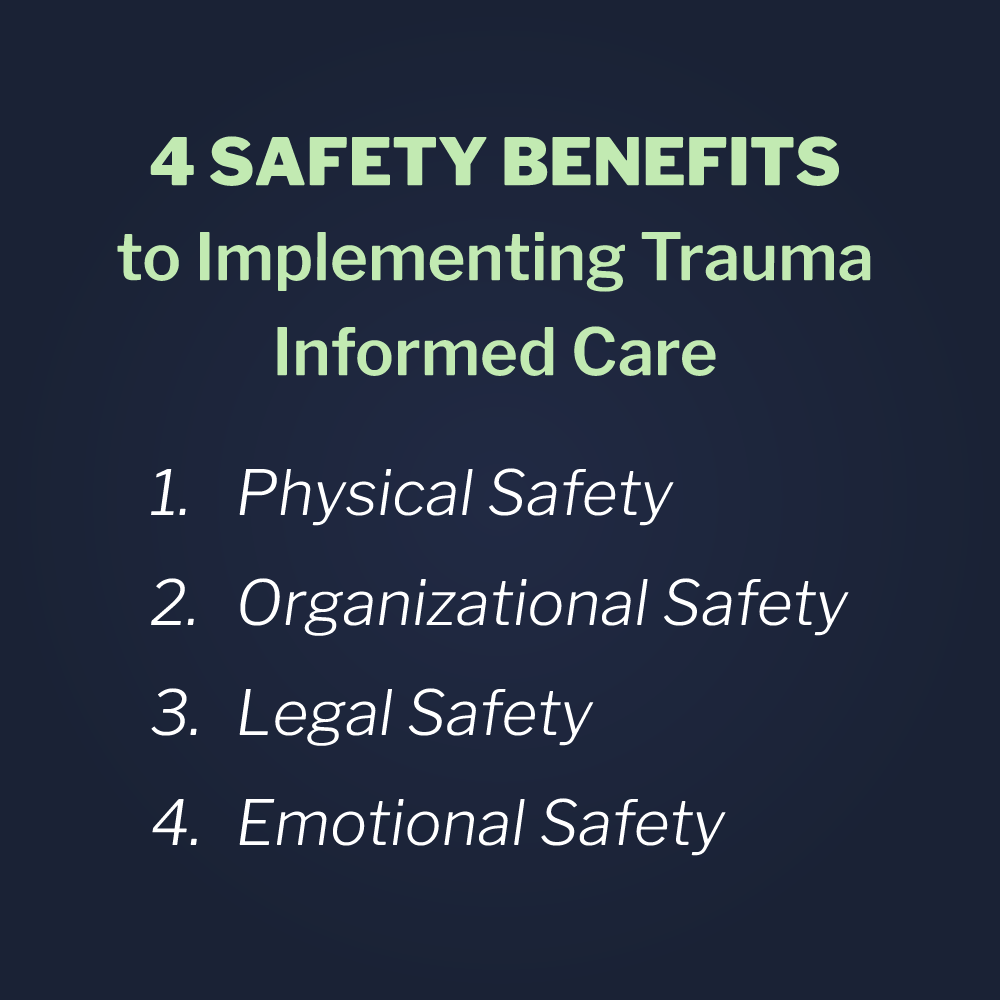For those of us that work in social services, education, and healthcare, trauma informed care is a concept that is familiar. Other terms used to describe this concept are trauma responsive care and trauma sensitive schools. All these terms revolve around one important word- Safety! Safety is very evident within literature, workshops, conferences and conversations about trauma informed care.
What is Trauma Informed Care?
Trauma informed care speaks to shifting one’s perspective and understanding acting out behavior, challenging behavior, anti-social behavior and how to manage it in a different way. Focusing on what happened (the story) behind the behavior to try to change the behavior. Giving people who are struggling the opportunity to tell their story. Giving the listener an opportunity to understand the back story to the behavior. This opportunity can lead to changes in behavior. Many times, the need to change the behavior is because the behavior is a safety concern to the individual, others around the individual, and caretakers/responders of/to the individual. Also, be very aware during this process of listening and learning not to re-traumatize the individual and to keep the individual safe.
Within the above-mentioned fields, usually trauma informed care is mentioned within the context of caring for the clients. However, it should also be noted within the context of our co-workers and work culture. Many trauma survivors are attracted to social services, healthcare and education because those are systems where they typically found help and comfort and want to give back, knowing what the struggle truly encompasses and the feelings and questions and challenges that arise. Trying through the struggles to come to a place they can feel safe daily and coping skills and support systems to keep them in that place every day.
trauma survivors are attracted to social services, healthcare and education because those are systems where they typically found help and comfort and want to give back, knowing what the struggle truly encompasses and the feelings and questions and challenges that arise. Trying through the struggles to come to a place they can feel safe daily and coping skills and support systems to keep them in that place every day.
As described above, it is difficult to talk about trauma informed care without paying close attention to safety. Safety can be talked about in four different aspects. Those include physical, organizational, legal and emotional.
1. Physical Safety
Physical safety is defined as verbal threats, physical threats, assault and conflict. These physical encounters are things that happen in our lives and can affect our behavior. These physical threats are typically what is focused on in the news outlets and social media. Not feeling safe physically can cause things like anxiety, poor performance at work/school, and lack of sleep. Individuals who are not feeling physically safe at that moment themselves often display acting out behavior. For some with chronic episodes of not feeling physically safe that personal alarm that alerts a person to danger is always “on”.
2. Organization Safety
Organizational Safety is defined as job/school performance, collaboration, morale at a company. These things can be affected negatively if someone is concerned about safety within the organization. Therefore, things like deadlines and clear expectations can be helpful to help people feel safe at an organization. Also, being mindful that there are many people within the general population that are trauma survivors and working adults. Organizations that have wellness programs and benefits for employees to stay well (physically and mentally) create a much safer environment and culture.
3. Legal Safety
Legal safety is paying attention to things like risk and liability. How to make environments feel safe so there are fewer incidents within the organization. This can be accomplished through structure and consistency. Having policies and procedures that are followed through on, having a system of documentation in place, and having structured evaluations to measure skills and abilities and taking the time to review on a consistent basis. Also, thinking about who I represent if something appears on social media or the news. Who will call or test or post or tweet me immediately if I show up on the news or social media (positive and negative issue)?
4. Emotional Safety
Emotional safety is about relationships. Human nature dictates that connection and being treated with dignity by showing respect are basic needs to continue to feel safe. Having emotional equilibrium is important to feel safe. Balance between all the things in life that consume our time every day. Relationships, work, school, daily life tasks, recreation, and time to ourselves for reflection. Keeping a good balance allows people to feel safe within day-to-day life. Ethics and morals drive decisions everyday of how to keep the balance in a good place that values and supports safety versus hinders safety.
All four of these types of safety are extremely important when discussing trauma informed care and trauma can be interwoven into all of them if we do not pay attention every day. A trauma informed care environment supports and understands safety, in all four realms, and purposefully puts strategies into place to maintain safety and wellbeing of everyone in the environment. This is done through training, education, support, and understanding of shifting our perspective.
To learn more about our training programs, click here.







.png)

